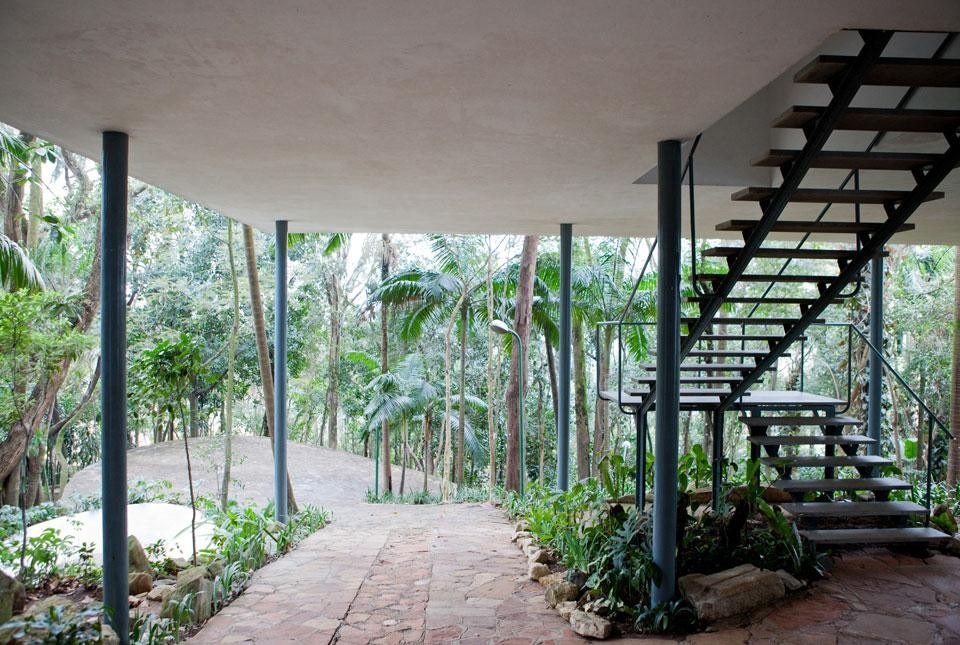These two iconic points of reference in the modernity of Latin America, Lina and her place of residence, inspired curator Hans Ulrich Obrist, a great proponent of the exhibitive capacity of domestic spaces, to come up with a show at the Casa de Vidro. This is the latest in a line of similar initiatives at Federico García Lorca's house in Granada, the house of Luis Barragán in Mexico City, the Sir John Soane Museum in London and the Nietzsche Haus in Sils Maria, Switzerland.
The insides are on the outside (a title dreamt up by Douglas Gordon), exhibits works by over thirty artists and architects, grouped into three phases. The first of these, The Prelude, opened to the public on 5 September.
These works, which share a sense of homage to Bo Bardi's work, are laid out against the controversially intimate backdrop of her garden, study and house, where the architect's rationalist education and her heightened sensitivity to the beauty of the vernacular make for a well-articulated project.
2.jpg.foto.rmedium.jpg)
![Paulo Mendes da Rocha, <em>Tu pisavas nos astros distraída</em> ["You stepped over stars, distraught"] 2012 Paulo Mendes da Rocha, <em>Tu pisavas nos astros distraída</em> ["You stepped over stars, distraught"] 2012](/content/dam/domusweb/en/art/2012/09/18/art-in-the-house-of-glass/big_393761_7419_3_PauloMendesdaRocha-Tu_pisavas_nos_astros_distraída(2012)2.jpg.foto.rmedium.jpg)
Bo Bardi's fascination for the country that welcomed her can be seen clearly; Brazilian artists make it clear it is reciprocal
(1)_12.jpg.foto.rmedium.jpg)
(2)1.jpg.foto.rmedium.jpg)
2.jpg.foto.rmedium.jpg)
1.jpg.foto.rmedium.jpg)
It is impossible not to highlight the importance of Bo Bardi's writing work, or to note that the articles she published in Domus throughout the 1940s already heralded the interests that would be developed in the design of the house. Three examples of these articles are: Architettura e natura, la casa nel paesaggio; Alla ricerca di una architettura vivente, about the modern Californian architecture of Albert Frey;and Sistemazione degli interni. All you need do is to paraphrase Domus' subheader from 1929 to 1943 — L'arte nella casa ["Art in the house"] — to see that The Prelude could not be more literal. Isabel Martínez Abascal
1.jpg.foto.rmedium.jpg)
Casa de Vidro
São Paulo, Brazil
2.jpg.foto.rmedium.jpg)


